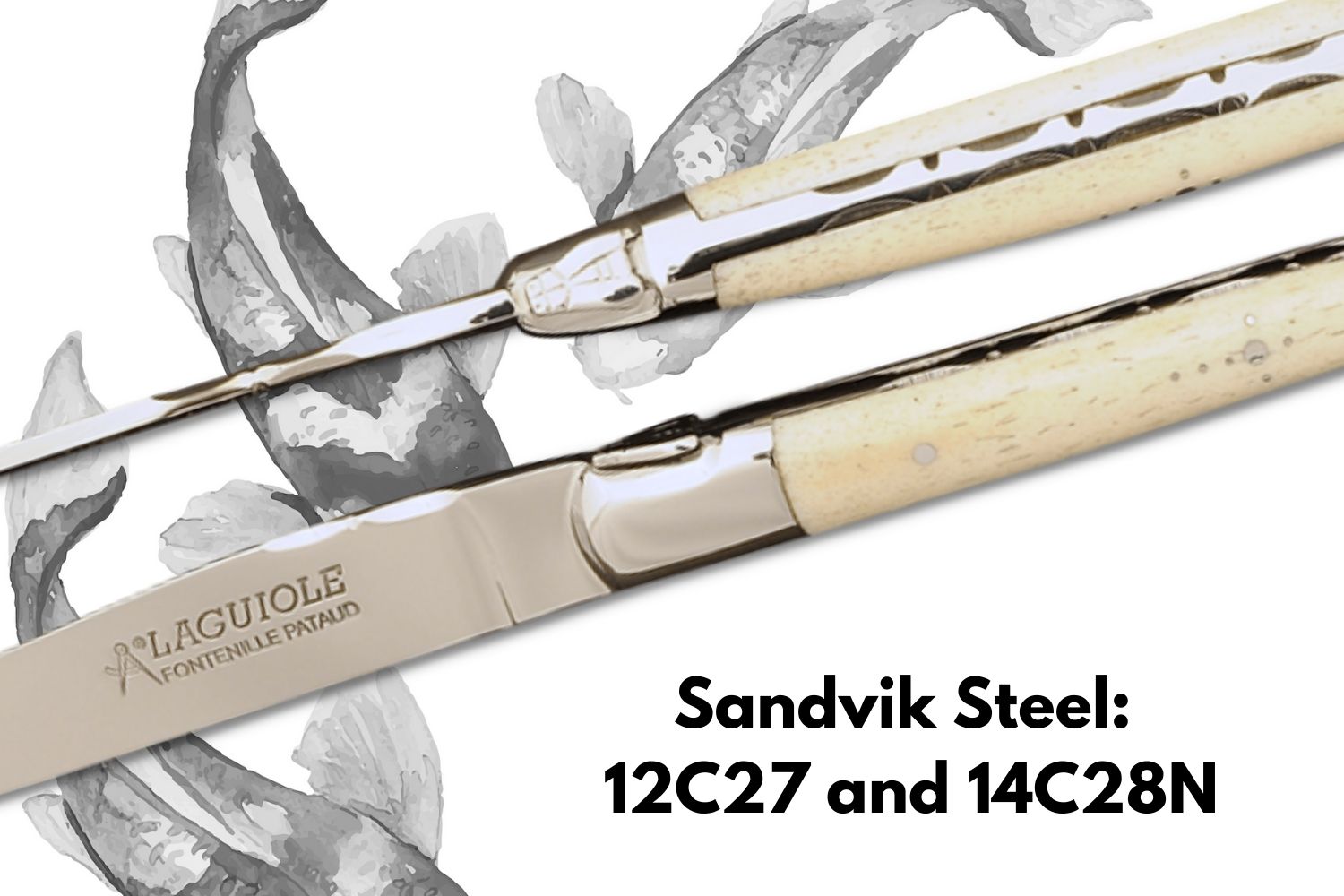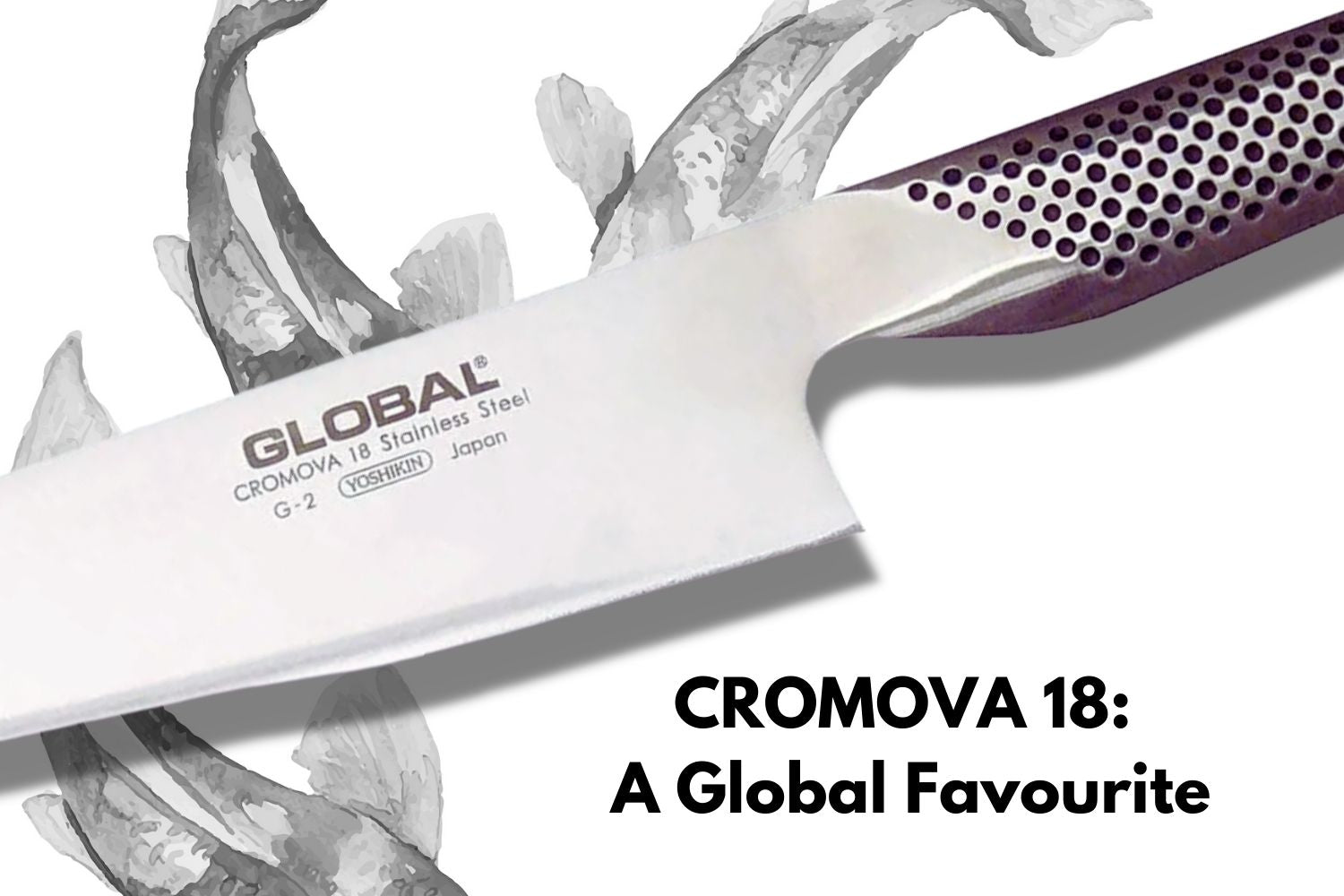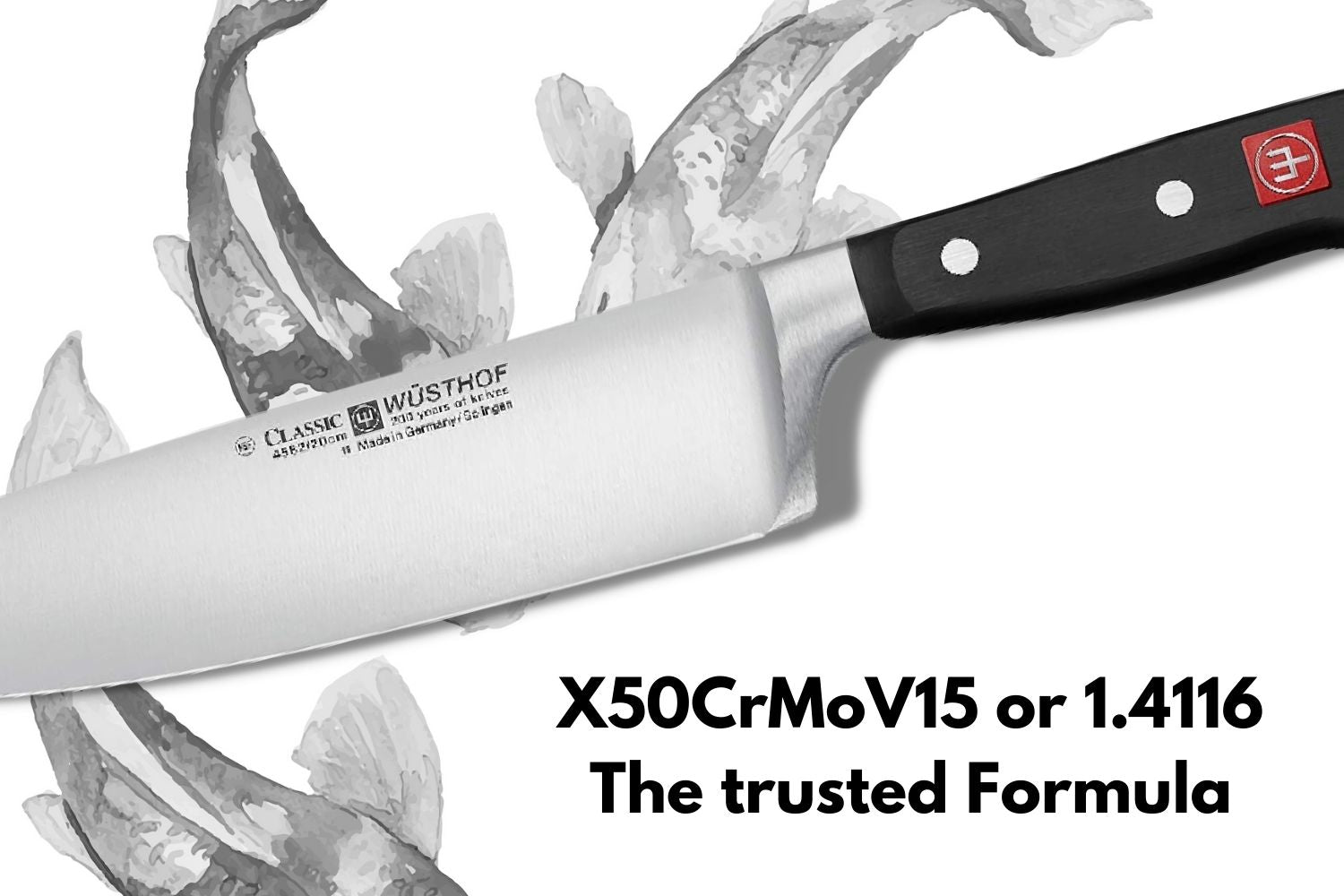You've undoubtedly heard of Sandvik Steels if you're a knife enthusiast or a knife maker. Sandvik manufactures two critical steels: 12C27 and 14C28N.
Click here to see our Sandvik steel outdoor knives!
What Is 12C27 Steel?
12C27 steel is part of the Sandvik family. It is low-end high-chromium steel that is well-liked in the knife industry because it provides outstanding wear resistance, corrosion resistance, and high hardness, key qualities that create ideal knife steel.
Additionally, 12C27 steel acquires sharpness relatively quickly, unlike other high chromium steels that take a long time to sharpen due to the tough chromium carbides. Sandvik 12C27 steel is commonly used in the production of hunting knives, pocket knives, fishing knives, camping knives, tactical knives, skate blades, and ice drills.
|
Chromium Cr |
13.50% |
Increases toughness, hardness, and tensile strength. Because it contains more than 12%, chromium makes 12c27 stainless steel and improves its corrosion resistance. |
|
Carbon C |
0.60% |
Carbon enhances the strength of steel. It also enhances wear and corrosion resistance.. |
|
Silicon Si |
0.40% |
Improves strength |
|
Manganese Mn |
0.40% |
Enhances toughness and hardness |
|
Phosphorous P |
0.003% |
Increases strength |
|
Sulfur S |
0.01% |
Increased machinability |
Characteristics of 12C27 Steel
Hardness: Sandvik 12C27 steel has a Rockwell hardness range of 54-61HRC. The actual hardness of this steel is determined by the manufacturer's heat treatment and other variations. It is classified as hard steel since it may reach 61HRC.
According to Sandvik, excessively high hardening temperature decreases hardness and poor wear resistance, whereas too low a strengthening temperature results in low hardness and poor corrosion resistance.
Wear Resistance: Steel's wear resistance is proportional to its hardness. When the hardness of 12C27 steel is considered, it is clear that it has high wear resistance. It may not provide the same wear resistance as superior knife steels, but it assures you that your knives will withstand typical wear and tear.
Furthermore, the blade will retain its form even with repeated sharpening and be less likely to display rolling on the tips.
Edge Retention: Because of its exceptional hardness, this Sandvik 12C27 will remain sharp for a long time and will not go dull. The steel retains its sharpness for a longer period than other popular steel. This characteristic is linked to its makeup's carbon and high chromium content.
The edge retention of 12C27 stainless steel is not the best; it falls short of other steels such as Crucible's CPM 154 stainless steel and other high-alloy non-stainless steels such as CPM CruWear steel.
Corrosion Resistance: Due to its high chromium content, 12C27 steel resists corrosion and rust. Additionally, because it is made of stainless steel, it is stain-resistant.
These characteristics make this steel a favourite among knife makers; however, its corrosion resistance is not perfect. As a result, it needs proper maintenance and care.
However, you cannot expect this steel-made knife to remain rust-free in water for days. If you want the blades of this steel to survive for decades, you must dry and oil them after each usage or if you plan on storing them for an extended period.
Toughness: Hard steel is typically considered brittle; however, 12C27 defies this assumption. Sandvik 12C27 steel has exceptional toughness even with a hardness of 61HRC. This steel's excellent carbide structure is to thank for its durability. High toughness can withstand chipping, breaking, and cracking when utilised in demanding applications.
The toughness of 12C27 steel is among the highest in stainless steel blades. Its toughness is similar to but somewhat less than that of 420HC stainless steel, 14C28N steel, and AEB-L steel.
Sharpening: Because 12C27 steel is not extremely hard, it is quick to sharpen even with basic tools such as a whetstone. Given that most high chromium steels are challenging to sharpen, it is important to stress that this is a special property of 12C27.
How Effective is 12C27 Steel in Knife-Making?
The key strengths of 12C27 stainless steel make it good steel for making blades. It is a top pick for heavy use because it is one of the most resilient steels on the market and can endure a lot of strain and abrasion.
Additionally, it provides excellent corrosion resistance and maintains an edge quite well under typical use. With standard sharpening techniques, it takes an extremely sharp edge and is incredibly simple to sharpen.
Best attribute? Compared to premium steel blades, 12C27 steel is more reasonably priced while providing equivalent performance.
What Is 14C28n Steel?
Specifically designed for use in high-end professional knife tasks, Sandvik 14C28N is martensitic stainless chromium steel.
It is primarily suited for cutting purposes where extremely high standards are placed on edge strength, blade stability, and corrosion resistance. These include Knives used for cooking, camping, fishing, and switchblades.
The Sandvik 14C28N stainless steel also referred to as 14C28N steel, is produced by the European steel manufacturer Sandvik in Sweden. It is an improvement over the 12C27 and 13C26 steel originally used to create razor blades.
The toughness of 14C28N steel, one of the best knife steels available, is well known. This is its most prized quality, which accounts for why most knife lovers favour it.
Contrary to other steel varieties that use carbon to enhance hardness, 14C28N also delivers high hardness and corrosion resistance due to the nitrogen in its composition.
Although their costs are not as cheap as those of low-end knives, you are nevertheless certain of receiving quality performances at optimum cost.
14C28n Steel Composition
|
Chromium Cr |
14% |
Enhances edge retention and tensile strength. Increases resistance against corrosion and wear. |
|
Carbon C |
0.62% |
Boosts corrosion and wear resistance and increases hardness. |
|
Silicon Si |
0.2% |
Improves strength |
|
Manganese Mn |
0.6% |
Enhances toughness and hardness |
|
Phosphorous P |
0.025% |
Increases strength |
|
Nitrogen N |
0.11% |
strengthens and enhances edge retention |
|
Sulfur S |
0.01% |
Increased machinability |
Characteristics of 14C28N Steel
Hardness: The majority of steel's other qualities are determined by its hardness. The hardness of the steel we're featuring today, 14C28N, lies between 55 and 62 HRC. 14C28N steel allows for the production of a variety of blades. For many knife producers, versatility is an essential quality.
In addition to making culinary knives, this steel can also be used to manufacture pocket knives, hunting knives, and fishing knives.
Hard steels are frequently thought to be brittle; however, Sandvik 14C28N is not one of such steels.
Edge Protection: A large part of the reason why 14C28N steel maintains its edge well is due to its composition's high carbon and chromium content.
Knives made of 14C28N steel are razor-sharp right out of the box and will maintain their sharpness for a while.
Toughness: One of the areas where 14C28N steel scores highly are in its toughness. It is known to offer among the best toughness in knife steels. A small number of steels can beat its toughness level. These include 8670 steel, 5160 steel, and Z-Tuff steel.
You can find a similar level of toughness in blades made of 420HC, AEB-L steel, and CPM 3V.
If you are looking for a knife blade with excellent toughness, you will never go wrong with a 14C28N knife. 14C28N Knives will withstand challenging applications without chipping or breaking.
Corrosion Resistance: The high chromium content of 14C28N stainless steel results in exceptional corrosion resistance. Regarding corrosion resistance, 14C28N knives are on par with those manufactured of 440A stainless steel and nitrogen-based BD1N steel.
Knives used in damp and humid situations are made from this steel because of its ability to resist corrosion.
Wear Resistance: The 14C28N steel has good wear resistance thanks to the carbon and manganese content. No matter how they are used, knives made of 14C28N will last a long time with less wear.
Sharpening: 14C28N steel is simple to sharpen since it's not pretty hard steel. With this steel, you should be able to achieve a razor-sharp edge without special sharpening equipment.
Is 14C28N Steel Suitable for Knives?
Yes, 14C28N steel has great corrosion resistance and strong edge retention and is faster to sharpen when it loses its edge.
This steel is a wonderful option for cooking, fishing, and everyday knives. The versatility of 14C28n steel makes it the ideal knife for indoor and outdoor use. The most well-known brand that uses this steel is Laguiole.




